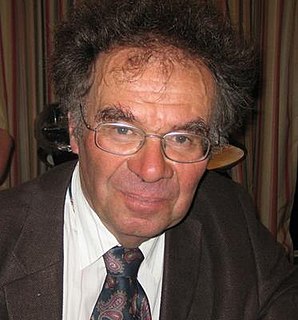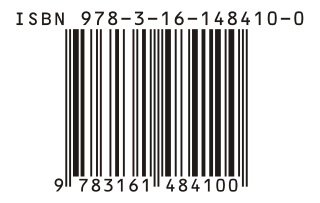In mathematics, the Langlands program is a web of far-reaching and influential conjectures about connections between number theory and geometry. Proposed by Robert Langlands, it seeks to relate Galois groups in algebraic number theory to automorphic forms and representation theory of algebraic groups over local fields and adeles. Widely seen as the single biggest project in modern mathematical research, the Langlands program has been described by Edward Frenkel as “a kind of grand unified theory of mathematics.”
In mathematics, a modular form is a (complex) analytic function on the upper half-plane satisfying a certain kind of functional equation with respect to the group action of the modular group, and also satisfying a growth condition. The theory of modular forms therefore belongs to complex analysis but the main importance of the theory has traditionally been in its connections with number theory. Modular forms appear in other areas, such as algebraic topology, sphere packing, and string theory.

Carl Ludwig Siegel was a German mathematician specialising in number theory and celestial mechanics. He is known for, amongst other things, his contributions to the Thue–Siegel–Roth theorem in Diophantine approximation and the Siegel mass formula for quadratic forms. He was named as one of the most important mathematicians of the 20th century.
In mathematics, Roth's theorem is a fundamental result in diophantine approximation to algebraic numbers. It is of a qualitative type, stating that a given algebraic number may not have too many rational number approximations, that are 'very good'. Over half a century, the meaning of very good here was refined by a number of mathematicians, starting with Joseph Liouville in 1844 and continuing with work of Axel Thue (1909), Carl Ludwig Siegel (1921), Freeman Dyson (1947), and Klaus Roth (1955).
In mathematics, the Siegel upper half-space of degree g is the set of g × g symmetric matrices over the complex numbers whose imaginary part is positive definite. It was introduced by Siegel (1939).
In number theory, a Shimura variety is a higher-dimensional analogue of a modular curve that arises as a quotient variety of a Hermitian symmetric space by a congruence subgroup of a reductive algebraic group defined over Q. The term "Shimura variety" applies to the higher-dimensional case, in the case of one-dimensional varieties one speaks of Shimura curves. Hilbert modular surfaces and Siegel modular varieties are among the best known classes of Shimura varieties.

Hans Maass was a German mathematician who introduced Maass wave forms and Koecher–Maass series and Maass–Selberg relations and who proved most of the Saito–Kurokawa conjecture. Maass was a student of Erich Hecke.
In algebraic geometry, the Igusa quartic is a quartic hypersurface in 4-dimensional projective space, studied by Igusa (1962). It is closely related to the moduli space of genus 2 curves with level 2 structure. It is the dual of the Segre cubic.
In mathematics, the Hodge bundle, named after W. V. D. Hodge, appears in the study of families of curves, where it provides an invariant in the moduli theory of algebraic curves. Furthermore, it has applications to the theory of modular forms on reductive algebraic groups and string theory.
In mathematics, the Schottky form or Schottky's invariant is a Siegel cusp form J of degree 4 and weight 8, introduced by Friedrich Schottky as a degree 16 polynomial in the Thetanullwerte of genus 4. He showed that it vanished at all Jacobian points. Igusa (1981) showed that it is a multiple of the difference θ4(E8 ⊕ E8) − θ4(E16) of the two genus 4 theta functions of the two 16-dimensional even unimodular lattices and that its divisor of zeros is irreducible. Poor & Yuen (1996) showed that it generates the 1-dimensional space of level 1 genus 4 weight 8 Siegel cusp forms. Ikeda showed that the Schottky form is the image of the Dedekind Delta function under the Ikeda lift.
In mathematics, the Ikeda lift is a lifting of modular forms to Siegel modular forms. The existence of the lifting was conjectured by W. Duke and Ö. Imamoḡlu and also by T. Ibukiyama, and the lifting was constructed by Ikeda (2001). It generalized the Saito–Kurokawa lift from modular forms of weight 2k to genus 2 Siegel modular forms of weight k + 1.
In mathematics, a Siegel Eisenstein series is a generalization of Eisenstein series to Siegel modular forms.
In mathematics, a Siegel theta series is a Siegel modular form associated to a positive definite lattice, generalizing the 1-variable theta function of a lattice.
In mathematics, the Saito–Kurokawa lift takes elliptic modular forms to Siegel modular forms of degree 2. The existence of this lifting was conjectured in 1977 independently by Hiroshi Saito and Nobushige Kurokawa (1978). Its existence was almost proved by Maass (1979), and Andrianov (1979) and Zagier (1981) completed the proof.
In mathematics, the Miyawaki lift or Ikeda–Miyawaki lift or Miyawaki–Ikeda lift takes two Siegel modular forms to another Siegel modular form. Miyawaki (1992) conjectured the existence of this lift for the case of degree 3 Siegel modular forms, and Ikeda (2006) proved its existence in some cases using the Ikeda lift.
In mathematics, a Klingen Eisenstein series is a Siegel modular form of weight k and degree g depending on another Siegel cusp form f of weight k and degree r<g, given by a series similar to an Eisenstein series. It is a generalization of the Siegel Eisenstein series, which is the special case when the Siegel cusp form is 1. Klingen Eisenstein series is introduced by Klingen (1967).

Günter Harder is a German mathematician, specializing in arithmetic geometry and number theory.

Eberhard Freitag is a German mathematician, specializing in complex analysis and especially modular forms.
AnatoliNikolaievich Andrianov is а Russian mathematician.





